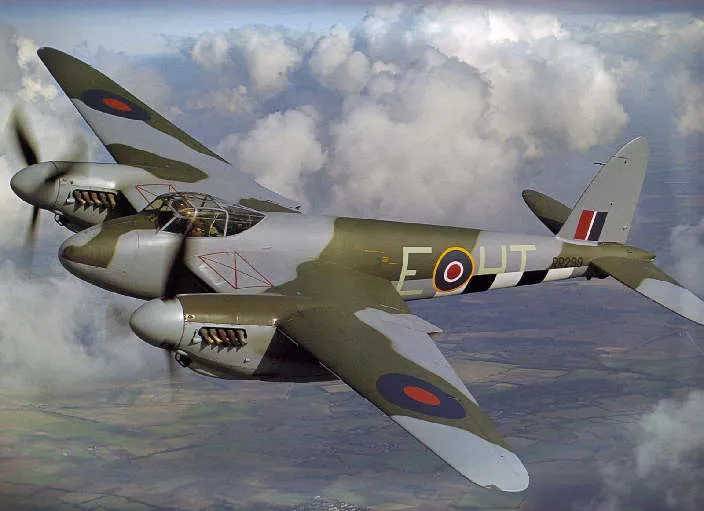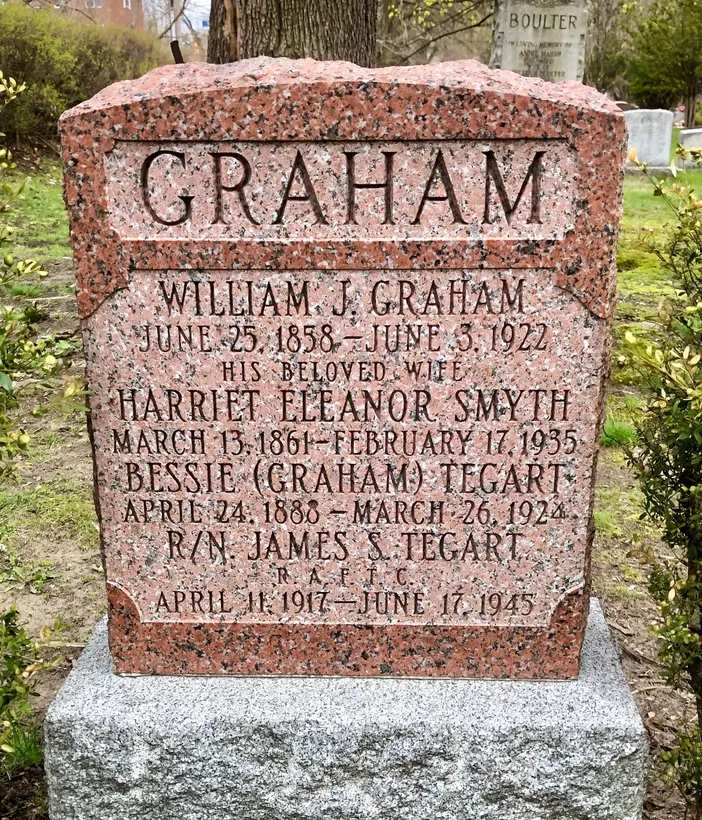Brian Duigan was one of a number of civilian aircrew employed by Transport Command and had been on ferrying duties since February 1943. He was undertaking his 26th trans-Atlantic delivery flight when he was killed. He had previously served in the RNZAF and RAF as a short service commission officer
For Your Tomorrow - A record of New Zealanders who have died while serving with the RNZAF and Allied Air Services since 1915 (Volume Two: Fates 1943-1998)Duigan, Brian James (Civilian)
Killed in Flying Accident 1945-June-17


Birth Date: 1920
Born:
Parents: Son of Major General Sir John Evelyn Duigan, K.B.E., C.B., D.S.O. and of Lady Duigan (nee Hanley), of New Zealand
Spouse:
Home:
Enlistment:
Enlistment Date: unkown date
Service
RAF
Unit
45 Group (RAF)
Base
RCAF Stn. Dorval, Quebec
Rank
Civilian
Position
Pilot (Captain)
Service Numbers
36269
This incident involved multiple aircraft:
- Mosquito FB.Mk. 26 Serial: KA260
- Mosquito FB.Mk. 26 Serial: KA260
All the above aircraft in the above list are referenced in this report.
Crew or Other Personnel
Mosquito KA260
Mission
Mosquito FB.Mk. 26 KA260
Ferry Flight 1945-June-17 to 1945-June-17
45 (T) Group (RAF) Dorval, Quebec
45 Group, RAF Transport Command, Dorval, Quebec. Canadian-built Mosquito KA260 took off from Crumlin Airport, London, Ontario, for Goose Bay, Labrador, the first leg of a delivery flight from Canada to Prestwick, Scotland. En-route, the crew encountered low cloud, rain, icing, and very unusual atmospheric conditions which made wireless communication almost impossible. At about noon, the aircraft was sighted flying off course by Quebec farmer Wilfred Ross near St Irenee, some 35 miles south of Mont Joli. In heavy rain, with clouds covering the mountain tops down to 500 feet, the Mosquito circled the farm three times before flying off to the NE. Moments after disappearing from view into a valley it struck trees on the eastern slope of a heavily wooded, 1200-foot high hill, cartwheeled and disintegrated, killing both crew members
New Zealand Civilian Pilot Captain BJ Duigan and Canadian Civilian Radio Officer/Navigator JS Tegart were killed in this flying accident
Ocean Bridge, The History of RAF Ferry Command by Carl A Christie pages 239-42, 329Mosquito serial: KA260

The de Havilland DH.98 Mosquito was a British twin-engine shoulder-winged multi-role combat aircraft, introduced during the Second World War. It was one of few operational front-line aircraft of the era whose frame was constructed almost entirely of wood. Nicknamed The Wooden Wonder, it was affectionately as the "Mossie" to its crews. The total number of DH98 Mosquito aircraft built was 7,781, the type serving with the main Allied air forces, including both the United States and Russia.
When Mosquito production began in 1941 it was the fastest propeller driven operational aircraft in the world. The first variant was an unarmed, high-speed, high-altitude photo-reconnaissance aircraft. Originally conceived as an unarmed fast bomber, the Mosquito's use evolved during the war into many roles including low to medium-altitude daytime tactical bomber, high-altitude night bomber, pathfinder, day or night fighter, fighter-bomber, intruder, and maritime strike aircraft. It was also used by the British Overseas Airways Corporation (BOAC) as a fast transport to carry small high-value cargoes to, and from, neutral countries, through enemy-controlled airspace. The crew of two, pilot and navigator, sat side by side, but a single passenger could ride in the aircraft's bomb bay when necessary.
The Mosquito FB Mk. VI was often flown in special raids, such as Operation Jericho, an attack on Amiens Prison in early 1944, and precision attacks against military intelligence, security and police facilities (such as Gestapo headquarters). On the 10th anniversary of the Nazi' seizure of power in 1943, a morning Mosquito attack knocked out the main Berlin broadcasting station while Hermann Goering was speaking, putting his speech off the air. Goering later said: "It makes me furious when I see the Mosquito. I turn green and yellow with envy. There is nothing the British do not have. They have the geniuses and we have the nincompoops."
The Mosquito flew with the RCAF and other air forces in the European, Mediterranean and Italian theatres. After the end of the Second World War Spartan Air Services flew 10 ex-RAF Mosquitoes, mostly B.35's plus one of only six PR.35's built, for high-altitude photographic survey work in Canada. There are approximately 30 non-flying Mosquitos around the world with five airworthy examples, four in the United States, and one in Canada. Harold Skaarup web page and Wikipedia
![]() BAE Systems (formerly De Havilland)
BAE Systems (formerly De Havilland)
Aircraft Images
Mosquito KA260
Mosquito FB.Mk. 26 KA260
1945-June-17 Accident: 45 GROUP Loc: Names: Duigan | Tegart
1945-June-17 Accident: 6 REMU Loc: Gaspe Names: Duigan | Tegart
1945-06-17 Accident Crash Flew into mountain in bad visibility 5m W of St.Irene Mont Joli PQ
Mosquito KA260
Mosquito FB.Mk. 26 KA260
1945-June-17 Accident: 45 GROUP Loc: Names: Duigan | Tegart
1945-June-17 Accident: 6 REMU Loc: Gaspe Names: Duigan | Tegart
1945-06-17 Accident Crash Flew into mountain in bad visibility 5m W of St.Irene Mont Joli PQ

